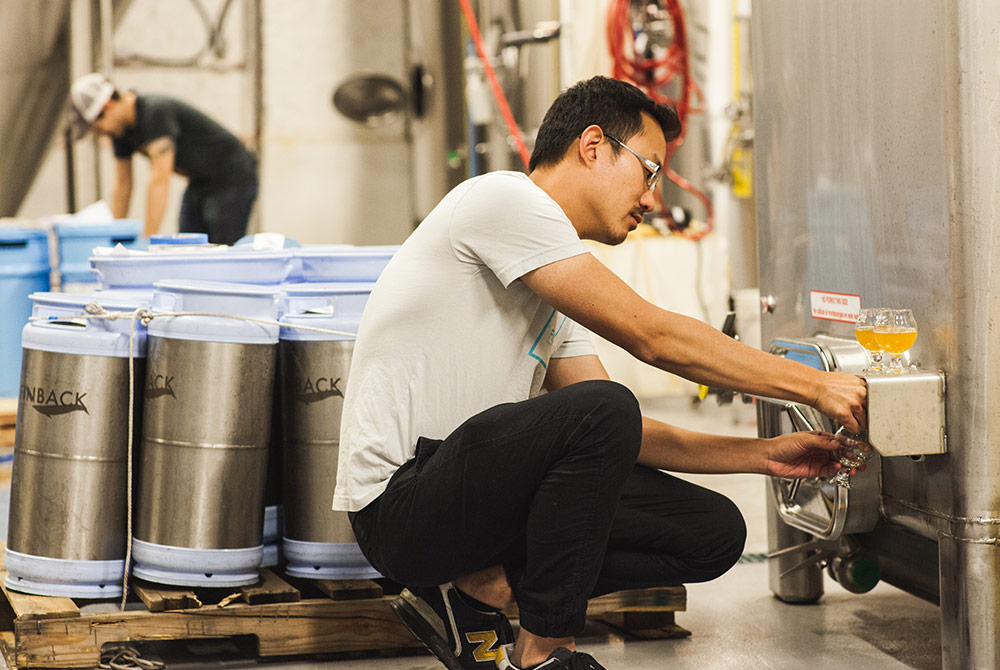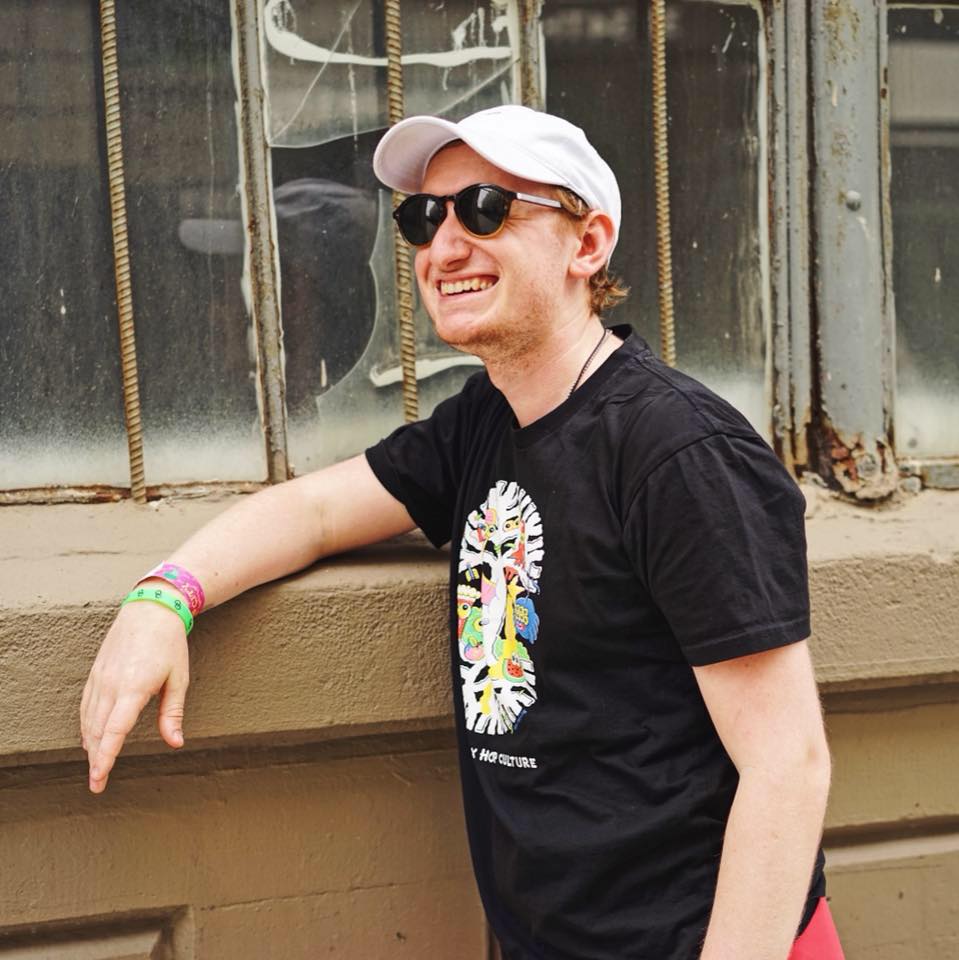Shop
Adapt or Die, How LIC Beer Project Thrives in a Crowded City
Changing with the times.
Walking around Long Island City, you hear change. High rises sprout from nearly every corner. Men in hard hats tear down industrial buildings, or revamp them into galleries, retail spaces, and more housing. It makes sense. LIC is one of the closest neighborhoods in Queens to Manhattan, a short subway ride across the East River. Plus, the view is unbeatable. For better or worse, change was inevitable: the gritty industrial history becoming sleek apartments and rooftop pools, auto repair shops becoming coffee shops and breweries.
LIC Beer Project is a part of that redevelopment. They weren’t the first brewery to open up in LIC, but in the two years since opening, they’ve come to represent the changing neighborhood; the brewery retains some of its industrial charm, but inside the taproom reside the bearded new residents of Queens hottest neighborhood.
Change happens within LIC Beer Project, too. Head Brewer, Anthony Sorice, and Sales Manager, Tom Desrochers, recall the initial vision of producing tart, farmhouse styles and spontaneously fermented beer. But now the real draw is their hazy, juicy IPAs. That’s what gets lines on can release day. Not a bottle-conditioned saison.
This is nothing new, though. Sorice also brewed at Threes Brewing in Brooklyn, where he saw a similar shift away from yeast-forward to hop-forward beer. Beer across the boroughs, and regionally, has seen this shift.
Sorice and Desrochers don’t see the shift as inherently bad. Like the neighborhood, they blend old and new ideas. They still have a coolship program, brewing sour beers fermented with New York City microflora. Sorice is excited about getting a patersbier and a milk stout on the brewing schedule. For Sorice and Desrochers, as long as the original identity isn’t completely lost, change can be good.
John Paradiso: How do you think the Long Island City neighborhood has changed?
Tom Desrochers: This place five years ago? If you accidentally got off the train you’d get right back on. Now you look around and you see all these high rises.
Anthony Sorice: Coffee shops, restaurants.
TD: And when we built this place out, the neighborhood still wasn’t really there yet. I mean it still isn’t there yet. Down the street there are these shitty tire shops, art studio kind of spaces. But yeah things are changing. We get more foot traffic, more people living around here.
JP: So LIC Beer Project, why the “beer project”?
TD: Our style from the get-go was that every beer we do is sort of a project. They’re all a collaborative effort — from the guys who brew the beers to me who sells the beers. We like to see every beer as something new; we’re not just putting out the same thing. Market demands it but that’s why we put out a rotating list of beers.
AS: Even with the style of beers we make, we can separate them into three categories: we make clean beers, Brettanomyces-focused beers, and sour beers that have mixed cultures of clean yeast, Brett, and lactic acid.
JP: Have you had to pull back on things you’ve wanted to do but the market doesn’t let you?
AS: Before, the brewery was focused on Brettanomyces beers and it’s slowly shifted to more clean-focused beers and we’re relying on heavy-hopped beer.
TD: So we’ve definitely had to halt some stuff that maybe we’d prefer to do.
AS: For instance, we’re doing a patersbier, an abbey-style beer. It’s super low alcohol, bone dry, refreshing. And it’s finally back on the schedule after almost a year.
TD: We’ll do a smaller batch, but it’s a hard sell.
AS: People don’t really know about it.
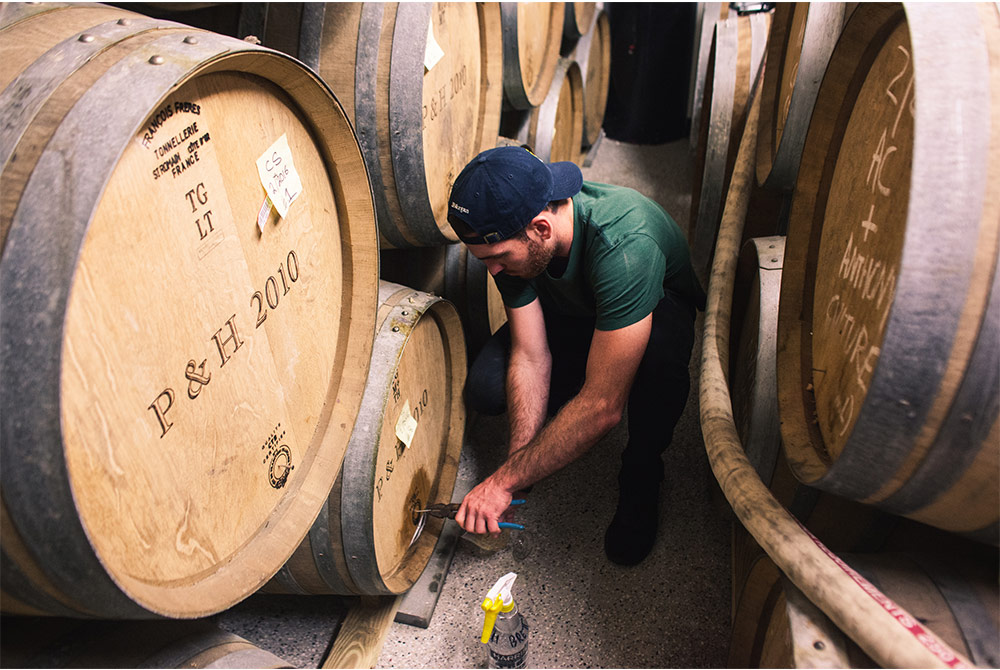
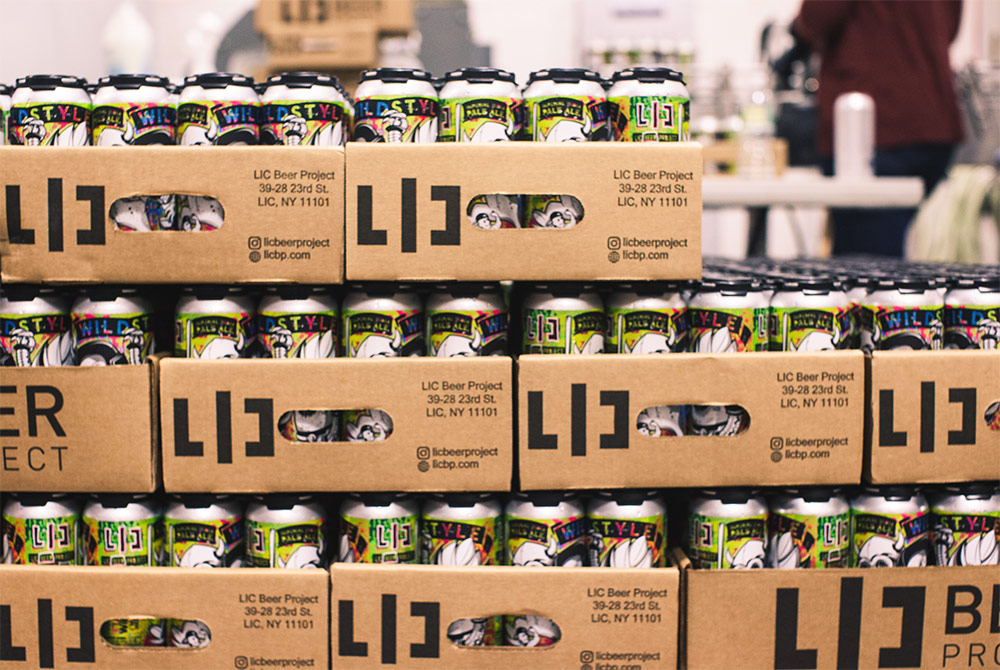
JP: It seems like breweries tend to have the weight of having to educate and sell at the same time. Have you found that to be true?
TD: I think that’s fun and good. And the consumer is only getting more savvy. People know about IPAs and sours and Brettanomyces. We do have to teach people about these things but they’re also learning about it themselves.
JP: How have things been in the taproom lately?
TD: When Dan [Acosta] built this place out it was very focused on production — with sales out of the door. He just wanted to maximize production. In the business plan, they didn’t think they’d draw a crowd. And it’s completely exceeded our expectations, like tenfold. We’re split 50/50 on money we make between distribution and taproom sales but 80% of that volume is out in distribution.
JP: Are there any beers coming up that you’re particularly excited about?
AS: We’re brewing a milk stout next week, we’ve had the ingredients now for six months and we kept getting thrown off schedule. We have a berliner weisse in stainless that we’re going to condition on fruit and then bottle. We’ll also be going through everything that’s in barrels now and seeing where the beer is at.
JP: How long have they been in barrels?
AS: Well we made these beers two years ago and they’ve just been cellaring since. And now it’s becoming the time that I think they’ll be ready. You’ve got to catch it when the beer’s ready and I think we’ve got it now. It’s just finding the time to check them all. It’s tricky because we maintain a regular production schedule and it’s hard to set aside time for the long-term projects like this.
JP: No one else in New York City is doing coolship beers, right? How has that process been?
AS: No, not in the city. Beer-wise, the microflora in the air is great. We get a really beautiful citrus character from spontaneous fermentation, whatever’s floating around in the air. As far as production goes… trying to do spontaneous fermentation in New York City is not conducive for the amount of square footage it takes. When you’re using the coolship it’s season-dependent, so you’ll most likely be brewing in the winter because that’s when the bacteria will be the most tame. But it takes up a lot of space. So if we didn’t have our coolship vessel we could fit X many more oak barrels or enlarge our grain storage or move a canning line to that space, but the product that comes from it is super special so we’re happy to sacrifice a little room for it.
JP: How do people respond to the coolship beers you’ve done?
AS: It’s a mixed bag. Some people will rate the beer poorly saying it tastes too sour. Even though it’s supposed to be sour. The sour market is tricky. I think it takes more educating than other styles.
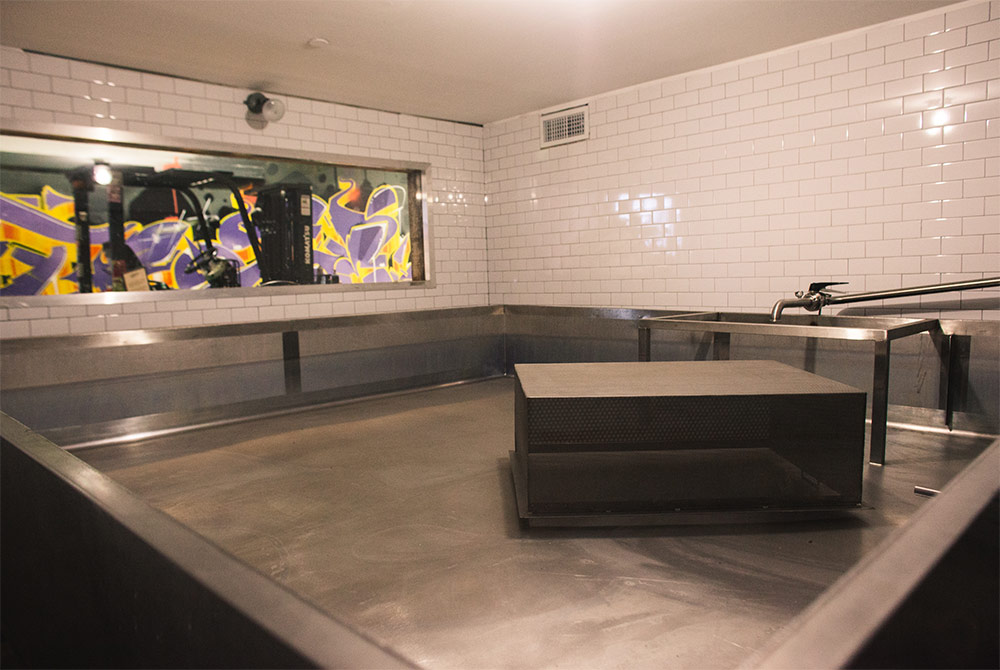
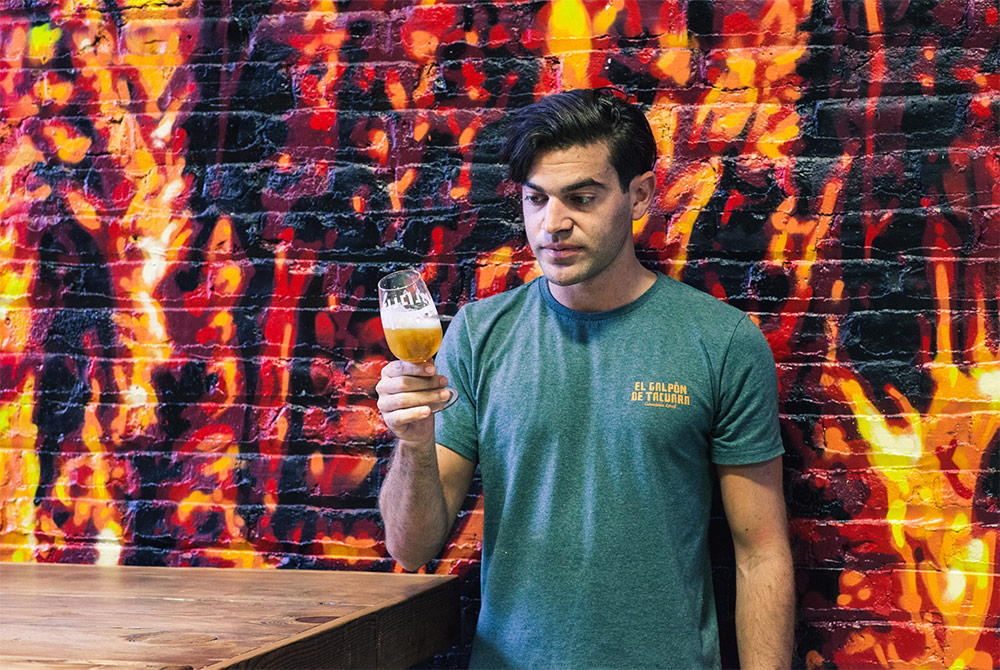
JP: Do you have any thoughts on the throughlines between New York City breweries or what craft beer means to the region?
AS: The brewery scene in the city is interesting. When everybody opened up, everyone was doing different things. My first year I spent at Threes Brewing. The head brewer was super into farmhouse ales and the portfolio was split: 50 percent farmhouse ales, 25 percent lagers and 25 percent hoppy beer. And they’ve greatly shifted to hoppy beers. When Other Half launched, they were doing big hoppy beers — which they do exceptionally well — but they were also doing more experimental stuff. I mean, they still have foeders and spirit barrels and occasionally they’ll drop some bottles. And we’ve also had to make that shift toward what the market demands. Everyone wants hoppy beers. We’ll put out sour beers and super limited stuff –barrel-aged, bottle conditioned — and nobody shows up for the releases.
Marketing gets people into the door but your beer is what brings people back.
JP: Part of it might be that New York is one of those places where the hype gets amplified and intensified.
AS: Marketing has played a huge role in the way that craft beer has changed.
JP: Do you see New York City becoming a high-pedigree beer destination?
AS: I think that the breweries that have opened up in the past three or four years are doing an exceptional job at keeping quality high. It has set a standard so that if you’re opening a brewery in New York City and your beer’s not up to snuff, people are going to write you off immediately and it’s going to be a struggle for you to develop your place within our market. It’s so competitive right now. Marketing gets people into the door but your beer is what brings people back.


